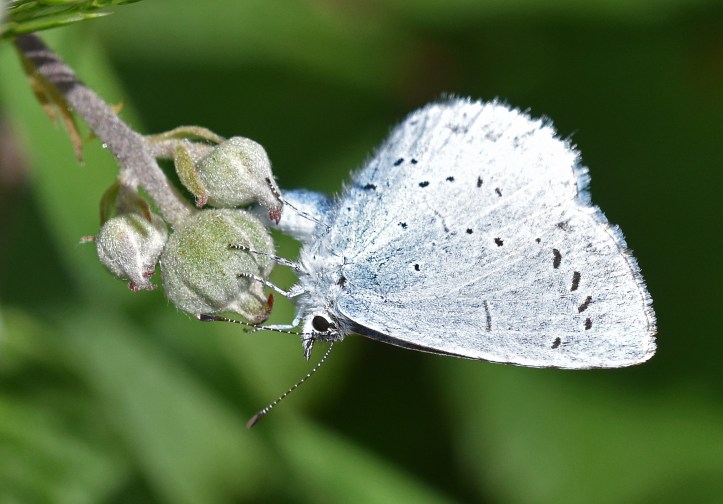
I came across this little female Holly blue (Celastrina argiolus) butterfly, depositing her eggs on bramble buds on 16th June 2019 in Galicia, Spain. It possible that she was a second generation butterfly, as the climate in NW Spain is mild and she was ovipositing on a typical second generation host plant, Rubus fruticosus. Unfortunately, I did not manage to photograph one of the flat, knobbly white eggs, but it can be seen here and here.
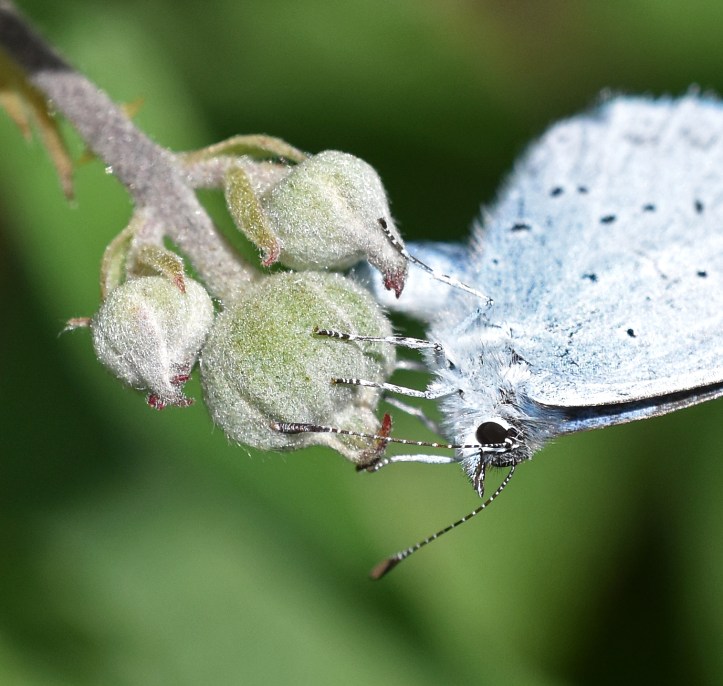
One of the only studies I could find of the egg-laying strategy of this species, by Steven P. Courtney (1985), concluded that the number of eggs that a Holly blue female lays on a bramble bush is related to its surface area (its size I suppose), regardless of the number or density of buds. Once the females have located a bramble bush however, they are particularly attracted to large buds, as shown in these photos, where the newly hatched larvae will be ideally-placed to feed on the expanding leaves. The female can be seen touching the buds with her antennae in these photographs (see below).
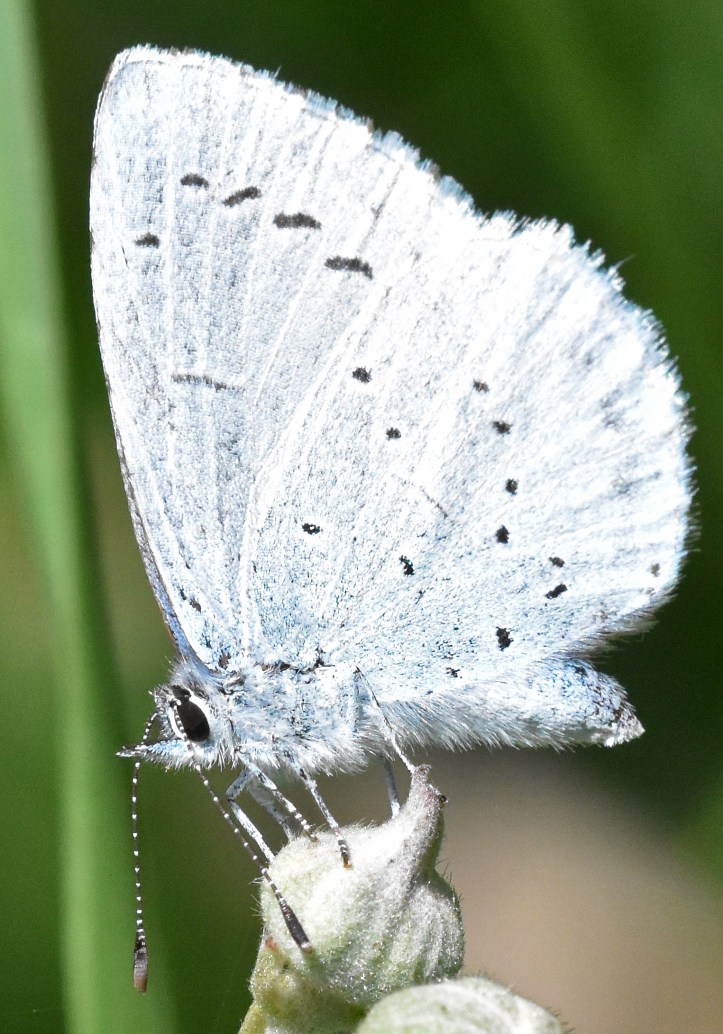
It is worth thinking about the role of the female in terms of egg laying, or oviposition. She spends a lot of time searching for the right host plant and selecting the best location to place the eggs, one by one; it must take quite a long time, and she almost certainly does not want to be bothered by frisky males when she is carrying out this important activity!
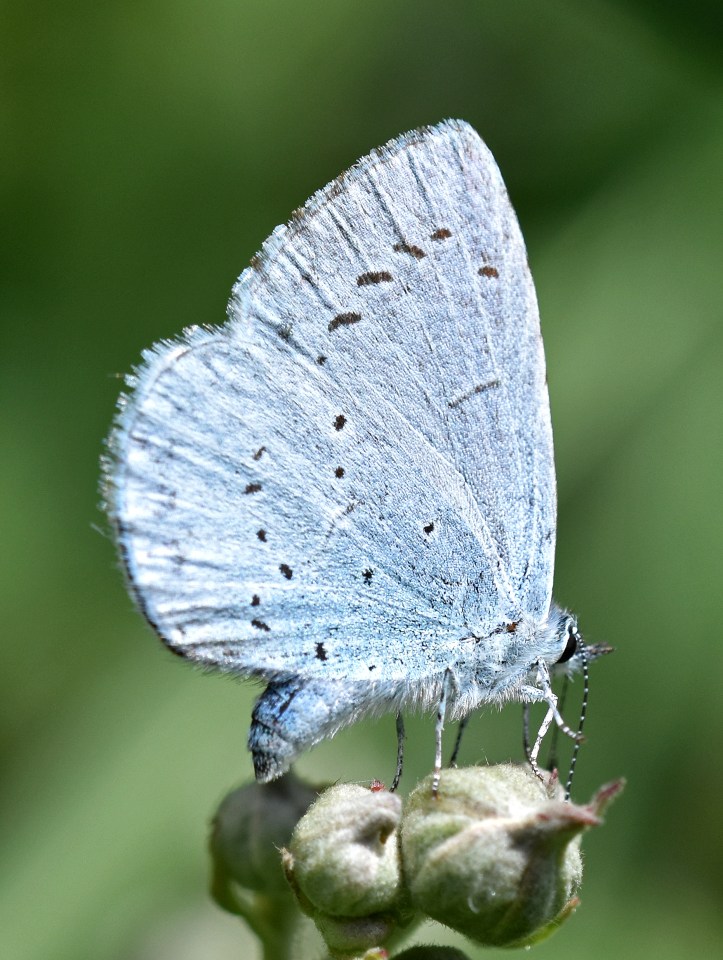
It will come as no surprise to most people, that the interests of the two sexes (i.e. males and females) are not always in perfect alignment! Generally speaking, and there are lots of interesting exceptions, but in the main, females invest more time and energy in a given reproductive encounter than most males. As well as providing more material investment in the form of eggs (compared to sperm), she must also carry, protect, mature and deposit them.
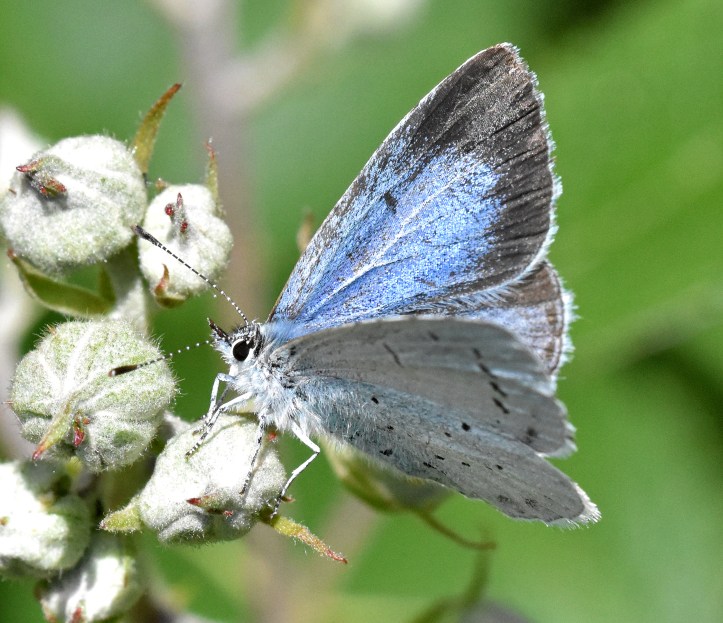
Female insects have managed to get males to contribute to the process in a number of fascinating ways, including nuptial gifts (protein packets) and even leaving the male to look after the offspring in some species (not butterflies)! Nevertheless, once a female has mated, it is usually in her best interests to spend time ensuring that the eggs she produces are placed in good locations; optimal sites for the caterpillars to hatch out and start feeding. In other words, not rushing to mate again, but taking time for oviposition (egg laying). Males on the other hand, will usually benefit from mating again as soon has they can produce another batch of sperm; assuming that they can find a willing partner.
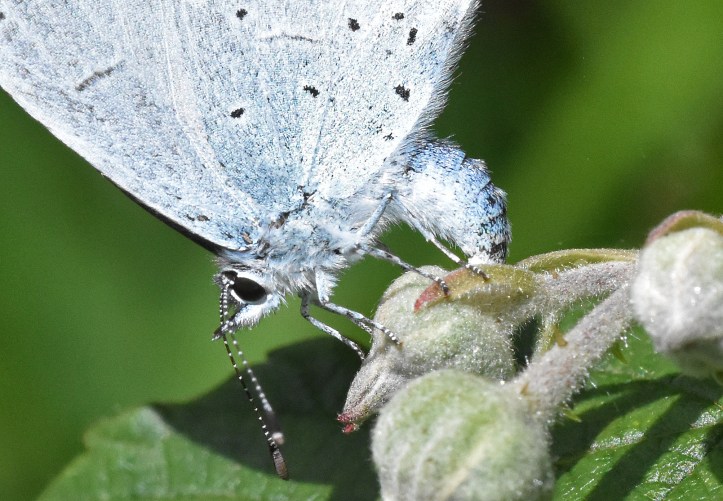
Nature has evolved many variations on this theme, as males and females have tried to find a balance between their contrasting needs, whilst benefiting from the act of reproduction. Sex shuffles the genetic pack and produces variation, which is the material on which natural selection operates, but males and females are not identical, and how they interact in this ‘tug-of-war’ is what drives evolution.

Polyommatine blue butterflies like this are ant attended, which means that the larvae secrete a sugar and N-rich liquid which is collected by the ants. In return, the ants help to protect the larvae from being attacked by parasitoids and predators. A mutually satisfying arrangement, although I am not aware of any specific studies on myrmecophily in this species. There are many different ant species associated with lycaenid butterfly larvae and in most cases the relationship appears to be facultative – i.e. not restricted to a certain species – and geographically variable. In other words, most ants appear to be capable of entering into these mutualistic arrangements.
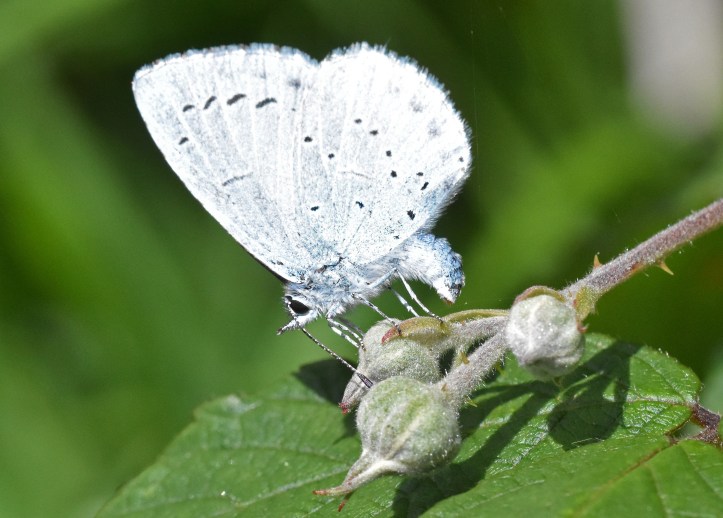
References
Courtney, S. P. (1985). Apparency in coevolving relationships. Oikos, 44(1), 91-98.
Obregón, R., Shaw, M. R., Fernández-Haeger, J., & Jordano, D. (2015). Parasitoid and ant interactions of some Iberian butterflies (Insecta: Lepidoptera). SHILAP Revista de lepidopterología, 43(171), 439-454.